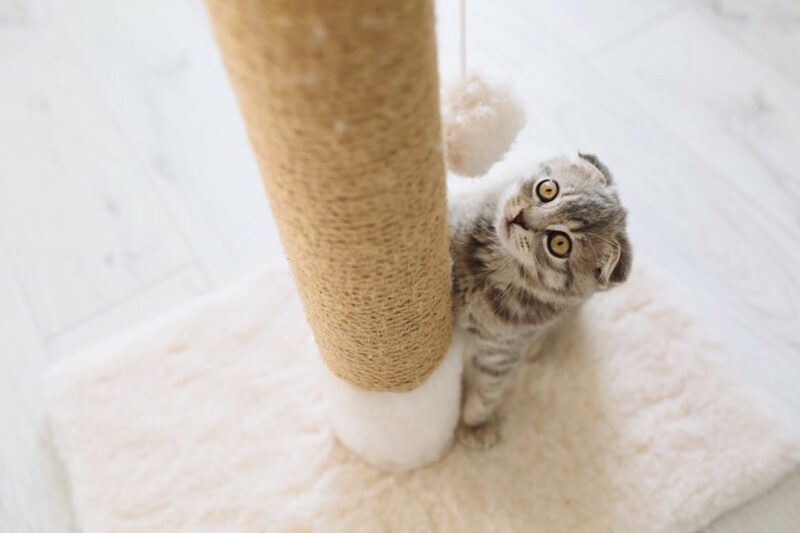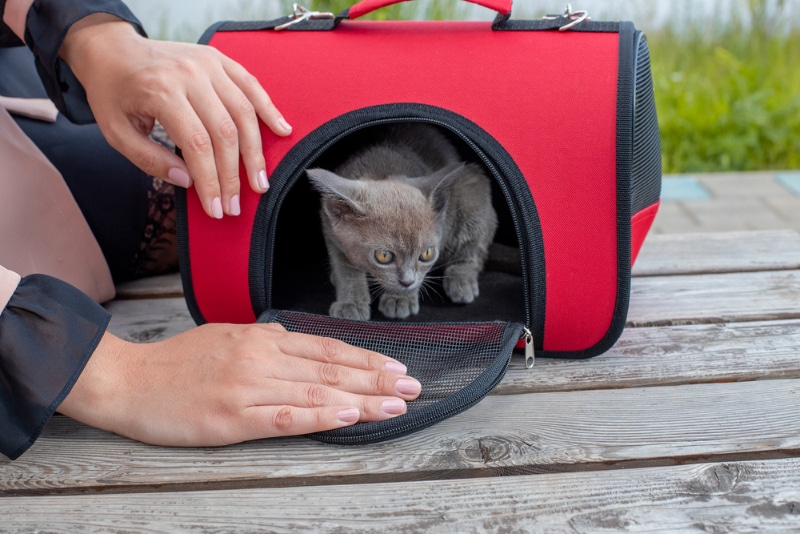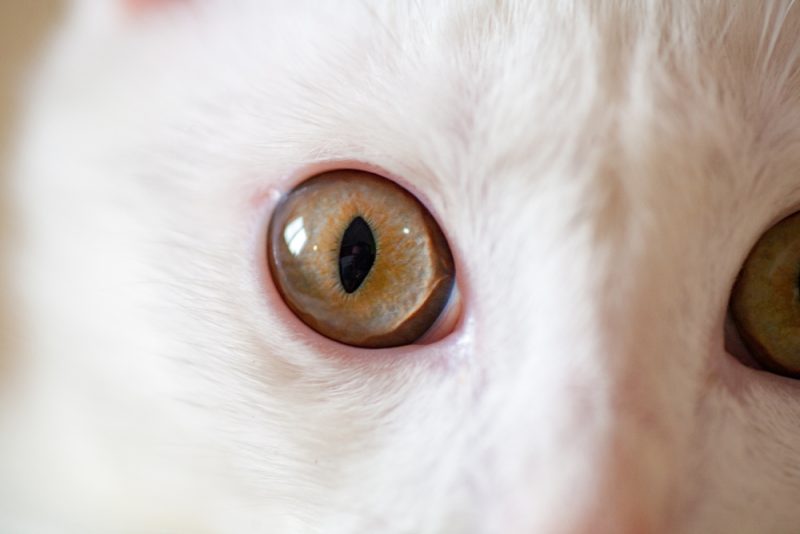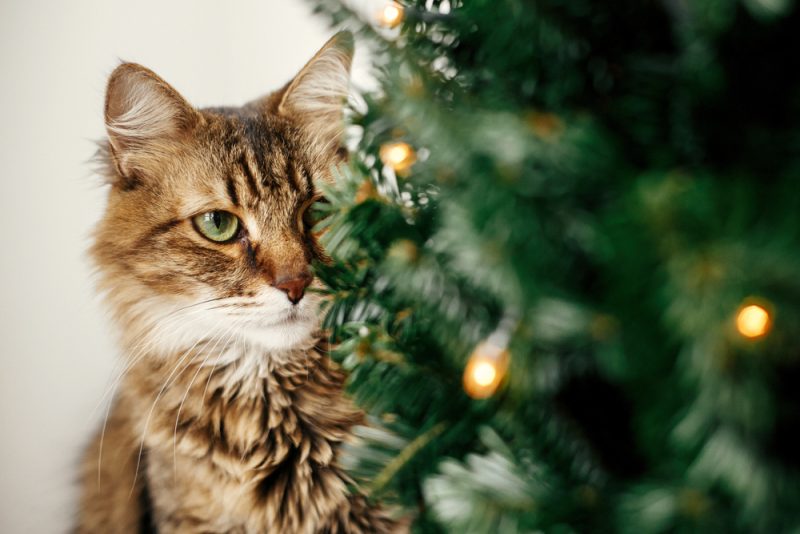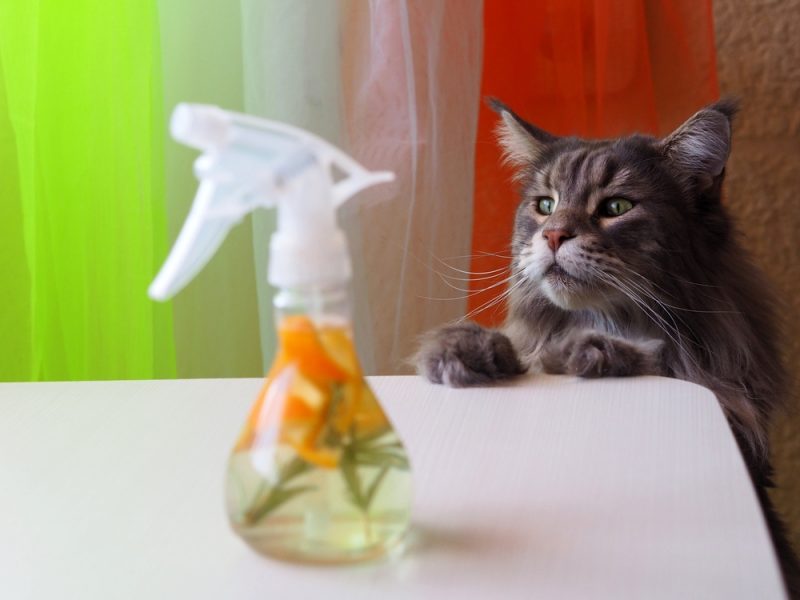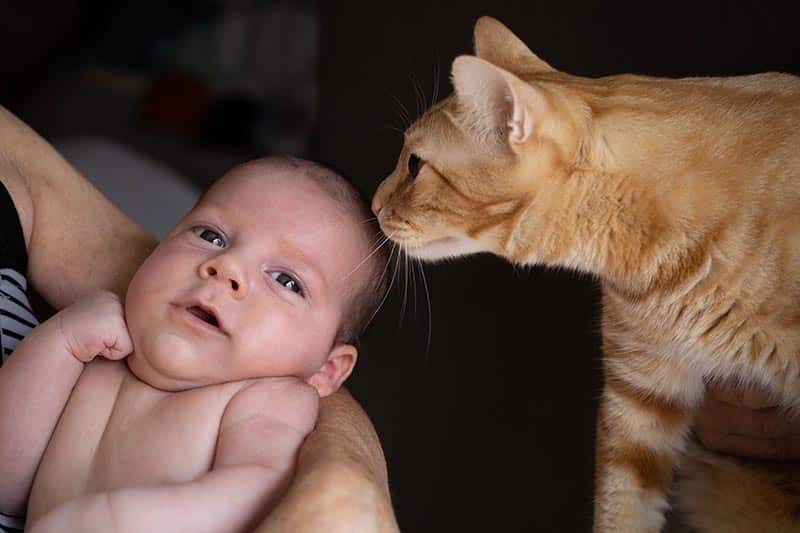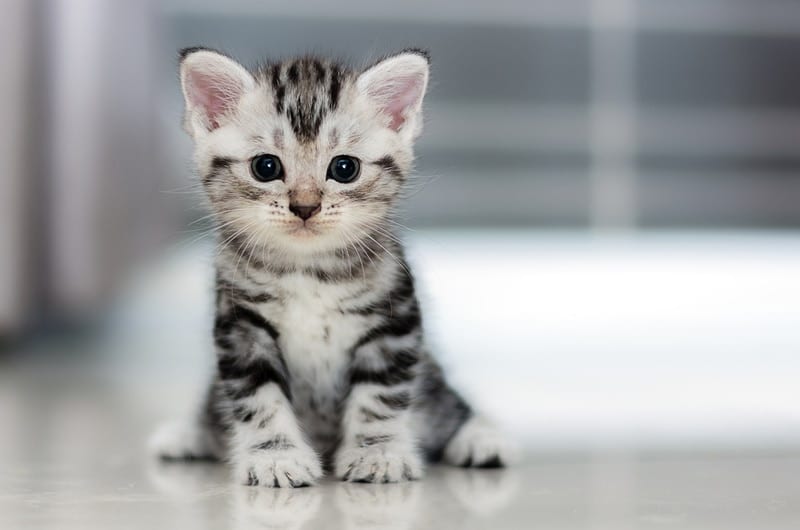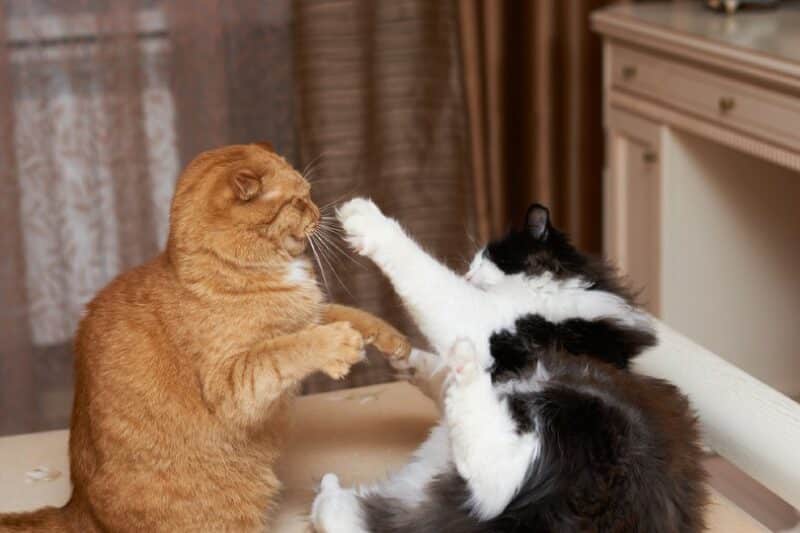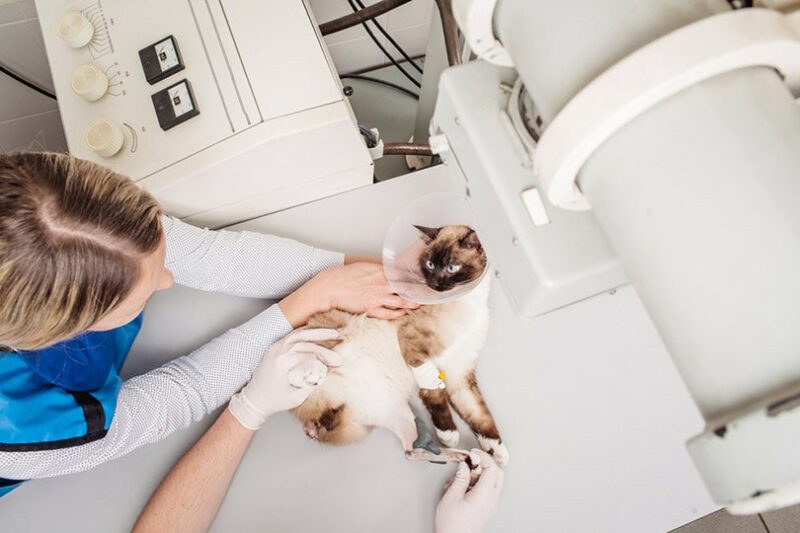Cats need an outlet for their scratching behavior, and to save your couch and sanity, it’s best to provide them with a scratching post. But for cats that tend to destroy everything you give them quickly, it can get tiresome spending money on things for them to demolish.
DIY-ing a scratching post is easier than you think. This plan for a log scratching post will save you money, and it’s so easy to whip up even for those with little building experience.

What You Will Need
We really like this DIY log scratching post plan because it doesn’t require any fancy tools or expensive materials. Many of the things you’ll need you can probably find in your home, borrow from a friend, or purchase cheaply at your local hardware store.
Gather your materials, and let’s get to it!
- Saw
- Staple gun or glue
- Drill
- Screws
- Plywood square, approximately 20 x 20 inches
- Hardwood log (oak, maple, or redwood)
- Natural rope, like jute, sisal, or cotton (optional)
- Carpet piece (optional)

How to Make a Cat Scratching Post from a Log
1. Cut Wood to Size
The critical feature to your DIY project is, of course, the log itself. It’s best to use hardwood such as oak, maple, or redwood. Clean up your chosen log of loose bark, dirt, and bugs.
Decide how tall you want the scratching post when determining your measurements. Be aware that the taller the post is, the wider you must craft the base to keep it balanced. We recommend a height of around 40 inches.
Your cat should be able to stretch its whole body up the post comfortably, so a height of 1.5x their length will suit perfectly.
Measure and mark your desired length and use a saw to cut it. A handsaw will work perfectly fine, but you may wish to use a circular saw if you have one at your disposal.
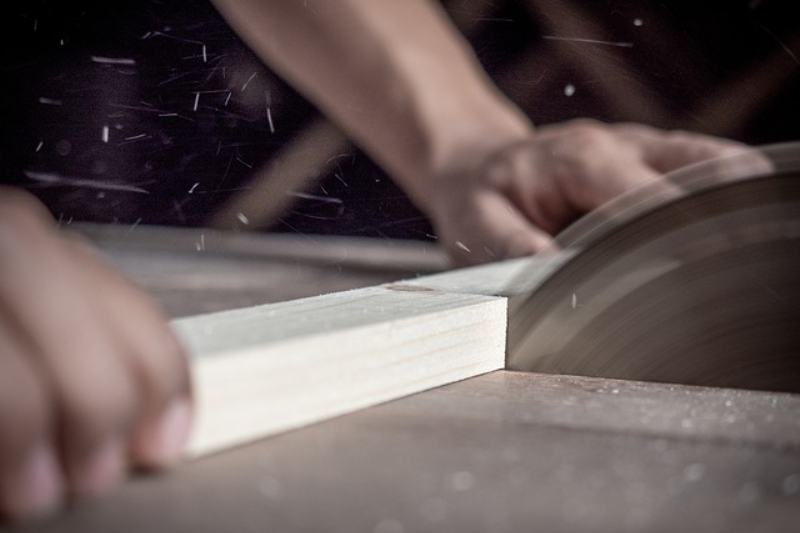
2. Cover Base with Carpet (Optional)
The primary purpose of the plywood base is to stabilize the scratching post when it’s in use. But if you want, you can create a place to scratch on the base itself.
To do so, use a piece of scrap carpet and cut it to fit atop the plywood. You can also cut it a few inches larger to fold over the edges and attach it to the bottom on the base, hiding the grain of the plywood.
Attach the carpet square with staples or heavy-duty (non-toxic) glue.
3. Attach Log to Base
To secure the log to the base, it’s easiest to do so upside down. Stand the log up on its end and place the carpeted side of the base on top
Simply use a few screws to lock the base to the log.
Once secured, flip the post back over onto the newly attached base and admire your handiwork! At this point, you should be able to tell if the base is stabilizing enough. If it does not stand up on its own, you either need to remove the base and attach a larger one or cut the log down a few inches.
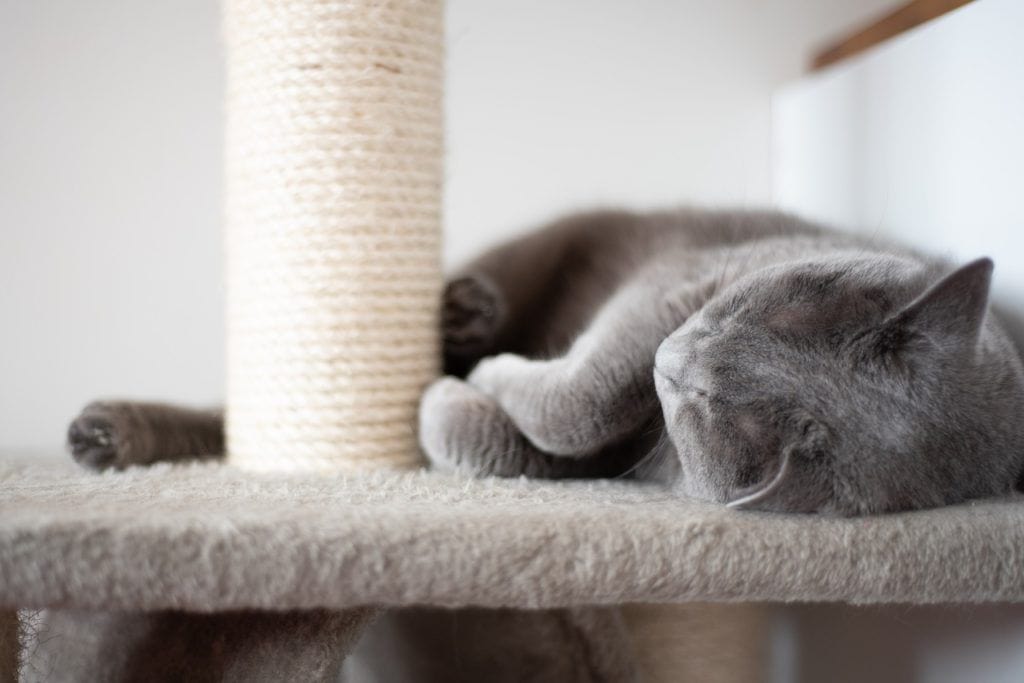
4. Wind Rope Around Log (Optional)
Your uncovered log is perfectly fine as a scratching post as it is. The wood can add a rustic look to your home and be naturally enriching for cats, particularly indoor ones.
However, to extend the life of the post, wrapping it with natural rope is recommended. Starting at the bottom, begin to wrap the rope around and up the log. You can use either staples or glue to secure it in place.
Ropes such as jute, sisal, or cotton are excellent for scratchers due to their fibrous natures. Their cover can create a scratching post with a more “put together” look.
As a bonus, the rope can be replaced regularly to renew the life of the post.
Alternatively, if you want to surprise your cat with something cool, check out the Hepper Hi-Lo Cat Scratcher. It's not just a scratcher; it's a piece of modern furniture that your cat can play on. It's got a curvy design that's perfect for stretching and moving, and it's built tough with strong birch plywood and thick B-flute cardboard. You can adjust it to three different heights, which keeps cats entertained. Plus, it won't break the bank! Our cats love it, and we do too.
- Premium Materials - Hepper's cardboard scratcher is made with dense, B-flute cardboard, and a metal...
- High, Low and Lower - A single cat scratch pad won't keep your cat engaged. 3 unique positions keeps...
- Activates Muscles - The Hi Lo isn't just a cat nail file to stop the chief cat couch scratcher. The...
At Catster, we’ve admired Hepper for many years, and decided to take a controlling ownership interest, so that we could benefit from the outstanding designs of this cool cat company!

How to Get a Cat to Use a Scratching Post
Providing a scratching post is one thing; getting your cat to use it is another! For the most part, cats take to posts quickly as the texture of wood or rope encourages naturally scratching.
If your cat has a more challenging time learning the rules, deploying some sneaky tricks may subliminally condition your cat to use the post and not your furniture.
Incorporate It into Your Decor
For those with a flair for interior design, plonking a big scratching post in the middle of your lounge may be the last thing you want to do. But, your cat won’t use something it rarely sees.
Add the scratching post to a well-used area, like next to their favorite sleeping spot or en-route to their feed bowl.
Make It Fun
Spend some time with your cat around the post. When playing with them, do so on or around the post, dangling their favorite toys nearby. Your cat may inadvertently pounce on the post and find they enjoy the texture on their paws.
Incorporating exciting things with the post will also build positive connections in your cat’s brain.
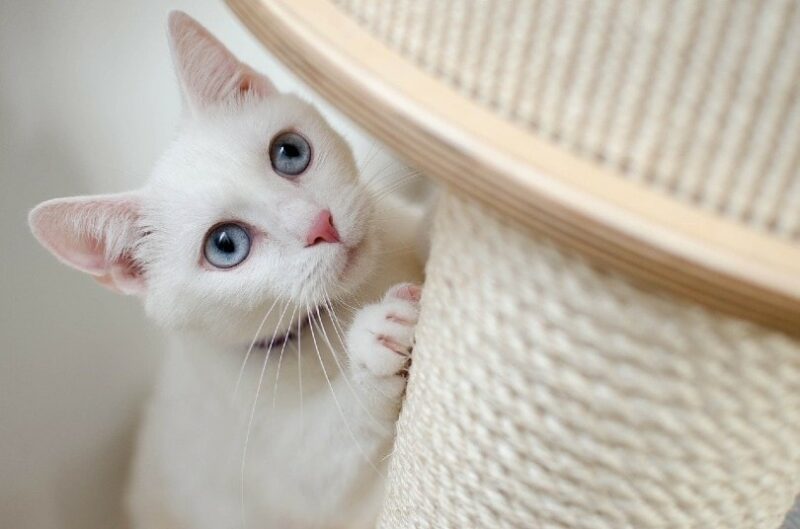
Discourage Alternatives
Even when provided with the ultimate cat tree or 12 different scratching posts, your cat may simply prefer to scratch on the couch or the carpet. While trying to attract your cat to its new post, you should simultaneously discourage it from scratching in inappropriate areas.
Respond negatively when they scratch where they shouldn’t by making a loud or irritating noise and a gentle swat away. Never hit or punish your cat, as all you will do is instill fear.
Instead, start forming negative connotations in your cat’s brain, so they no longer want to scratch in that particular place.
Good Old Fashion Bribery
If all else fails, douse the scratching post in catnip and lodge your cat’s favorite treats into the rope. When you see your cat using the post, reinforce the behavior by playing with them, petting them, or giving them a treat.

Final Thoughts
Who knew a simple log from the yard could easily be transformed into a brilliant scratching post? This DIY is easy for owners of all experience levels to create something they can be proud of.
Even if your cat ignores it, you can still let everyone know you made it!
Featured Image Credit: Anatoliy Cherkas, Shutterstock
